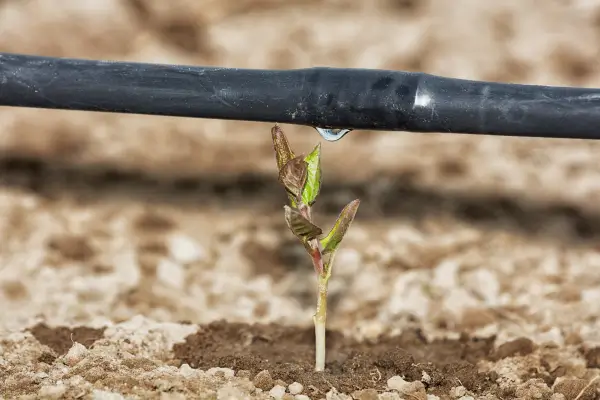Personalizing your home organization system has never been easier—or more stylish—than with Cricut Smart Vinyl. Whether you’re labeling kitchen drawers, craft supplies, or office files, personalized drawer labels add a professional and cohesive look to any space.
With just a few materials and your trusty Cricut machine, you can create durable, waterproof labels that are both functional and aesthetically pleasing. Let’s dive into this simple yet impactful DIY project step by step.
Transform your organizational game today with custom drawer labels!
Why Use Cricut Smart Vinyl for Drawer Labels?
Cricut Smart Vinyl is a versatile material that makes label-making effortless. Here’s why it’s perfect for drawer labels:
- Durability : Waterproof and tear-resistant, ideal for high-use areas like kitchens or garages.
- Ease of Use : No need for transfer tape—Smart Vinyl works seamlessly with your Cricut machine.
- Customization : Choose from a wide range of colors, finishes (matte or glossy), and even metallic options.
- Professional Look : Elevates any space with clean, polished designs.
Materials You’ll Need
Before starting, gather these essential materials. This list is practical and accessible, allowing you to use items you already have or find easily.
Main Materials
- Cricut Smart Vinyl : Available in various colors and finishes. Choose matte for a subtle look or glossy for a bold statement.
- Cricut Machine : Any Cricut model compatible with Smart Vinyl (e.g., Cricut Joy, Maker, or Explore Air).
- Label Design Template : Create your own design or use free templates available online.
- Weeding Tools : For removing excess vinyl after cutting.
- Scissors or Cutter : To trim vinyl sheets if needed.
Optional Tools
- Application Tool : Helps smooth out bubbles when applying vinyl to surfaces.
- Protective Sealant Spray : Adds extra durability to your labels, especially for outdoor use.
- Drawer Surface Cleaner : Ensures the surface is clean and free of dust before applying labels.
Step-by-Step Guide to Making Your Drawer Labels
Step 1: Plan Your Label Design
Before jumping into the cutting process, take time to carefully plan your label design. Here’s how to do it:
- Decide on Content : Think about what each label will say. For example:
- Kitchen drawers: “Utensils,” “Spices,” “Baking Tools.”
- Craft room: “Scissors,” “Glue,” “Paint Brushes.”
- Office: “Stapler,” “Paper Clips,” “Notebooks.”
- Choose Fonts and Styles : Match the font style to the room’s theme or purpose.
- Use playful fonts like “Comic Sans” or “KG Happy” for kids’ rooms.
- Opt for elegant serif fonts (e.g., “Playfair Display”) for formal spaces like kitchens.
- Stick to clean sans-serif fonts (e.g., “Arial” or “Montserrat”) for modern offices.
- Select Colors and Finishes : Pick vinyl colors that complement your decor. For example:
- Neutral tones like black, white, or gray for minimalist aesthetics.
- Bright colors like yellow or teal for a fun, bold look.
- Metallic finishes (gold, silver, rose gold) for a touch of luxury.
- Measure Your Space : Measure the width and height of your drawer fronts to determine the ideal label size. Leave some margin around the edges for a balanced appearance.
Pro Tip: Use Cricut Design Space or similar software to preview your design before cutting. Experiment with different layouts, fonts, and colors virtually to ensure you’re happy with the final look.
Step 2: Prepare Your Cricut Machine
- Load Smart Vinyl : Insert the Smart Vinyl roll into your Cricut machine. Ensure the vinyl is aligned properly and not twisted.
- Set Material Type in Design Space : In the Cricut Design Space app, select “Smart Vinyl” as the material type. This ensures the machine uses the correct blade pressure and speed settings.
- Clean the Cutting Mat : If you’re using a mat (required for certain Cricut models), make sure it’s free of lint, dust, or old adhesive residue. A clean mat ensures precise cuts.
- Test Cut (Optional) : If you’re new to using Smart Vinyl, perform a test cut on a small scrap piece. This helps you confirm that the blade depth and settings are correct before cutting your actual labels.
Pro Tip: If your vinyl feels sticky or difficult to load, gently rub the back of the sheet to reduce static before inserting it into the machine.
Step 3: Cut Your Labels
- Send the Design to the Machine : Once your design is finalized in Cricut Design Space, click “Make It” to send the file to your Cricut machine.
- Monitor the Cutting Process : Watch the machine as it cuts to ensure everything runs smoothly. If the vinyl shifts or jams, pause the machine and adjust the material.
- Weed the Excess Vinyl : After cutting, use weeding tools to remove the parts of the vinyl that aren’t part of your design. This step is crucial for achieving clean, professional-looking labels.
- Start by removing large sections of excess vinyl.
- Use a hook tool to carefully lift and remove smaller details, like the centers of letters (e.g., the hole in an “O”).
- Inspect the Design : Double-check your weeded vinyl to ensure no stray pieces remain. Clean up any rough edges with a sharp pair of scissors or a precision knife.
Pro Tip: Place your weeded vinyl on a light-colored surface to easily spot any leftover bits of excess material.
Step 4: Apply the Labels to Drawers
- Clean the Surface : Wipe the drawer fronts with a damp cloth to remove dust, grease, or fingerprints. Let them dry completely before applying the labels.
- Align the Label : Position the label where you want it to go. Use a ruler or level tool to ensure it’s straight and evenly spaced from other labels.
- Peel and Stick : Slowly peel the backing off the Smart Vinyl, starting from one corner. Carefully align the label on the drawer front and press it down firmly.
- Smooth Out Air Bubbles : Use an application tool (or even a credit card) to smooth out the vinyl from the center outward. This prevents air bubbles and ensures a strong bond.
- Press Firmly : Once the label is in place, press down firmly along all edges to secure it. Pay extra attention to corners, as they are prone to lifting over time.
Pro Tip: If you notice an air bubble after applying the label, gently lift the vinyl slightly and reapply it to smooth out the area.
Step 5: Add Final Touches
- Trim Excess Edges : If any part of the label extends beyond the drawer’s edge, trim it neatly with scissors or a precision knife.
- Apply Protective Sealant (Optional) : For added durability, especially in high-moisture areas like kitchens or bathrooms, apply a clear protective sealant spray. Allow it to dry completely before handling.
- Organize Your Space : Group similar items together and label them consistently. This creates a cohesive and visually appealing organizational system.
Pro Tip: Take a photo of your labeled drawers once finished. This can serve as inspiration for future projects or as a reference if you need to recreate the labels later.
Tips for Success
To ensure your project goes smoothly and your labels last as long as possible, follow these detailed tips:
- Choose the Right Font Size : Avoid overly small fonts, as they can be difficult to read and may not cut cleanly. Stick to a minimum font size of 12-14 points for legibility.
- Use High-Quality Vinyl : While budget-friendly options may seem tempting, higher-quality vinyl tends to adhere better and last longer, especially in challenging environments.
- Avoid Overloading Designs : Keep your designs simple and uncluttered. Too many intricate details can make weeding more difficult and increase the risk of errors during cutting.
- Test Adhesion Before Final Placement : Before applying the label permanently, test its adhesion by sticking a small piece of vinyl to the drawer surface. Let it sit for a few hours to ensure it bonds well.
- Store Leftover Vinyl Properly : Roll up unused vinyl sheets tightly and store them in a cool, dry place. Avoid exposing them to direct sunlight or extreme temperatures, as this can degrade the material.
- Experiment with Shapes : Don’t limit yourself to rectangular labels. Try rounded corners, ovals, or even custom shapes to add visual interest.
- Label Consistency : Use the same font, color scheme, and size across all labels in a single space. This creates a polished and professional look.
- Protect Against Moisture : If your labels will be exposed to water or humidity, always use a waterproof sealant spray. This is especially important for kitchen or bathroom drawers.
Final Thoughts
Making personalized drawer labels with Cricut Smart Vinyl is a quick and rewarding project that combines functionality with style. Whether you’re organizing your pantry, workspace, or craft room, these labels will help keep everything in its place while adding a touch of personality to your home.
With minimal effort and materials, you can achieve professional-looking results that last. Gather your supplies, follow these steps, and enjoy the satisfaction of a beautifully organized space.
Ready to get started? Your dream organizational system awaits!



